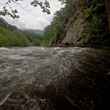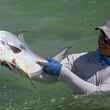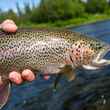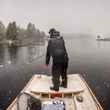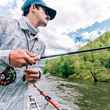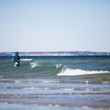It has been a while since I’ve acquired a new pair of waders, mostly as a result of my preference to wade wet whenever temperatures will allow, thus limiting my need to replace my sad old pair of White Rivers. But, given that I’ve been seeking to expand my season, it was time to get into a new pair. Given the positive feedback that Orvis' Silver Sonic Guide waders have been receiving from the field since their release, they seemed like a good place to start.
Orvis termed this new addition to their Silver Sonic wader lineup “guide” waders because of the way they’re built to stand up to abuse. To quantify that, Orvis compares them to other waders in the Silver Sonic line, rather than using ambiguous language about competitor’s offerings. If you’ve ever inspected the other waders in the Silver Sonic line, you know that they’re well made, hardy waders themselves, making the fact that Orvis describes the Silver Sonic Guides as 4 times more abrasion resistant and 40% more puncture resistant than the Silver Sonic convertibles truly something to talk about.
The Silver Sonic Guide Waders are constructed with Orvis’ SonicSeam ® technology (no stitching) and according to Orvis they are bulletproof. Orvis touts them as likely to outlast your last 3 pairs of waders combined. But, being durable isn’t all a great pair of waders needs to be, they need to be comfortable and offer features that can make your day on the river more convenient and successful.




